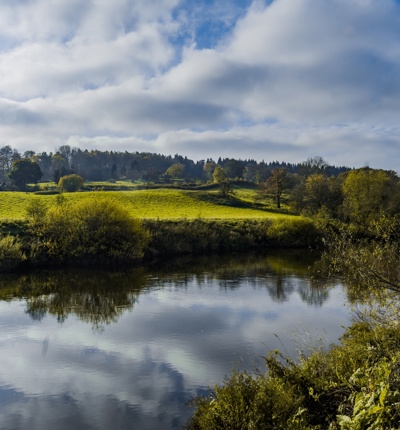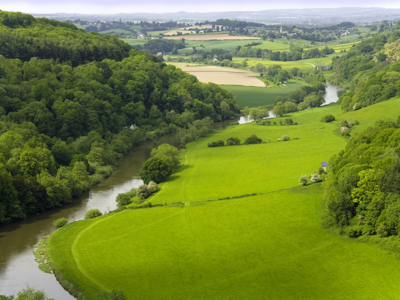
Holding polluters to account: from big farmer to big pharma
Sarah Moore and Harry Wilkinson discuss the impact of pharmaceutical contamination on waterways.
Posted on 06 September 2024
A new study published by the University York and the Rivers Trust has revealed shocking levels of pharmaceutical contamination in rivers and waterways across England’s national parks.
The study, led by Alistair Boxall, Professor of Environmental Science at the University of York, has highlighted the urgent need for tighter regulation and increased monitoring in some of the UK’s most ecologically significant landscapes.
Of the 54 locations tested, pharmaceuticals such as antidepressants, anticonvulsants, antimicrobials, anti-inflammatory substances, lipid regulators and diabetes treatments were detected at 52 sites.
The purpose of the study was to explore areas where low levels of pollution would normally be expected. Findings from the study indicated that pharmaceutical pollution is generally at a lower level in national parks than those associated with UK cities. However, there were several concerning exceptions, with some rivers in the Peak District and Exmoor having concentrations of active pharmaceutical ingredients (APIs) higher than samples taken in London.
How do pharmaceuticals end up in the waterways of national parks?
APIs are introduced to waterways after individuals have used medicines via their urine or through the inappropriate disposal of unused medicines. Administration of medicines in livestock and animals are also major contributors.
Problems caused by pharmaceutical pollution in national park waterways
High concentrations of APIs in waterways have adverse impacts for biodiversity in national parks, ecosystems which Professor Boxall describes as “irreplaceable environments”. Levels in the Peak District, Exmoor, Lake District, South Downs and New Forest all had pharmaceutical levels that were potentially harmful to aquatic species.
Concentrations of antibiotics in particular locations of the Peak District were also found to be higher than levels thought to be necessary to create antimicrobial resistance in bacteria, which is concerning for the health of humans using such spaces to enjoy water sports.
The greatest number of APIs detected were in the Peak District, with the fewest being detected in the Yorkshire Dales. However, results from the study indicated that the incidence of APIs across all of the national parks tested were higher in summer than in winter. High concentrations of antihistamines cetirizine and fexofenadine and Type 2 diabetes treatment, metformin, were detected in all national parks.
Reasons for pollution
There are multiple reasons why rivers in national parks have returned results showing them to be more polluted than expected. These include lower levels of flow, lack of connectivity to sewage treatment systems and population surges caused by seasonal visitors.
The combination of these factors puts national parks at particular risk to this type of pollution.
The solution
Professor Boxall is calling on the government, the water industry, and local authorities to work together to improve monitoring in national parks and for investment in up-to-date treatment technologies.
Sarah Moore, a partner in Leigh Day’s Leeds office, commented:
“Under s.50 of the new Environment Act 2021 the Government has powers to require all product manufacturers to ensure that their products can be disposed of (or recycled) in an environmentally responsible manner at the end of usage. Following Professor Boxall’s study, it appears that there is an urgent need for the Government to use its statutory powers to better regulate the disposal of pharmaceutical products imposing duties on Big Pharma producers in the UK”.
Leigh Day’s work on water pollution
Leigh Day have been at the forefront of fighting for individuals affected by polluted water in the Southwest. The firm is currently pursuing an action to hold Cargill PLC, Avara Foods Ltd and Freemans of Newent Ltd on behalf of individuals affected by pollution in the River Wye in the Southwest.
In addition, the recent Supreme Court decision in The Manchester Ship Canal Company Ltd v United Utilities Water Ltd [2024] The Manchester Ship Canal Company Ltd (Appellant) v United Utilities Water Ltd (Respondent) No 2 (supremecourt.uk), now enables individuals who are suffering directly from the impacts of water pollution to hold the water industry and other corporate polluters directly to account. Potential groups affected include those who have property along the course of polluted rivers as well as those who use the waterways either professionally or recreationally, such as local businesses, fishing clubs, wild swimmers or canoe clubs.
Helping communities in the north
Through their offices in Leeds and Manchester, Leigh Day are now seeking to use their expertise and recent changes in the law to help communities across the north of England.
For those interested in finding out more please use the registration form here.

Harry Wilkinson
Harry is a trainee solicitor in the international and group claims department.

River Wye claim
Residents of the Wye, Usk and Lugg River catchments are bringing a collective legal action against Dŵr Cymru Welsh Water and companies within the Cargill UK poultry group (including Avara Foods), for their alleged role in polluting the region.


